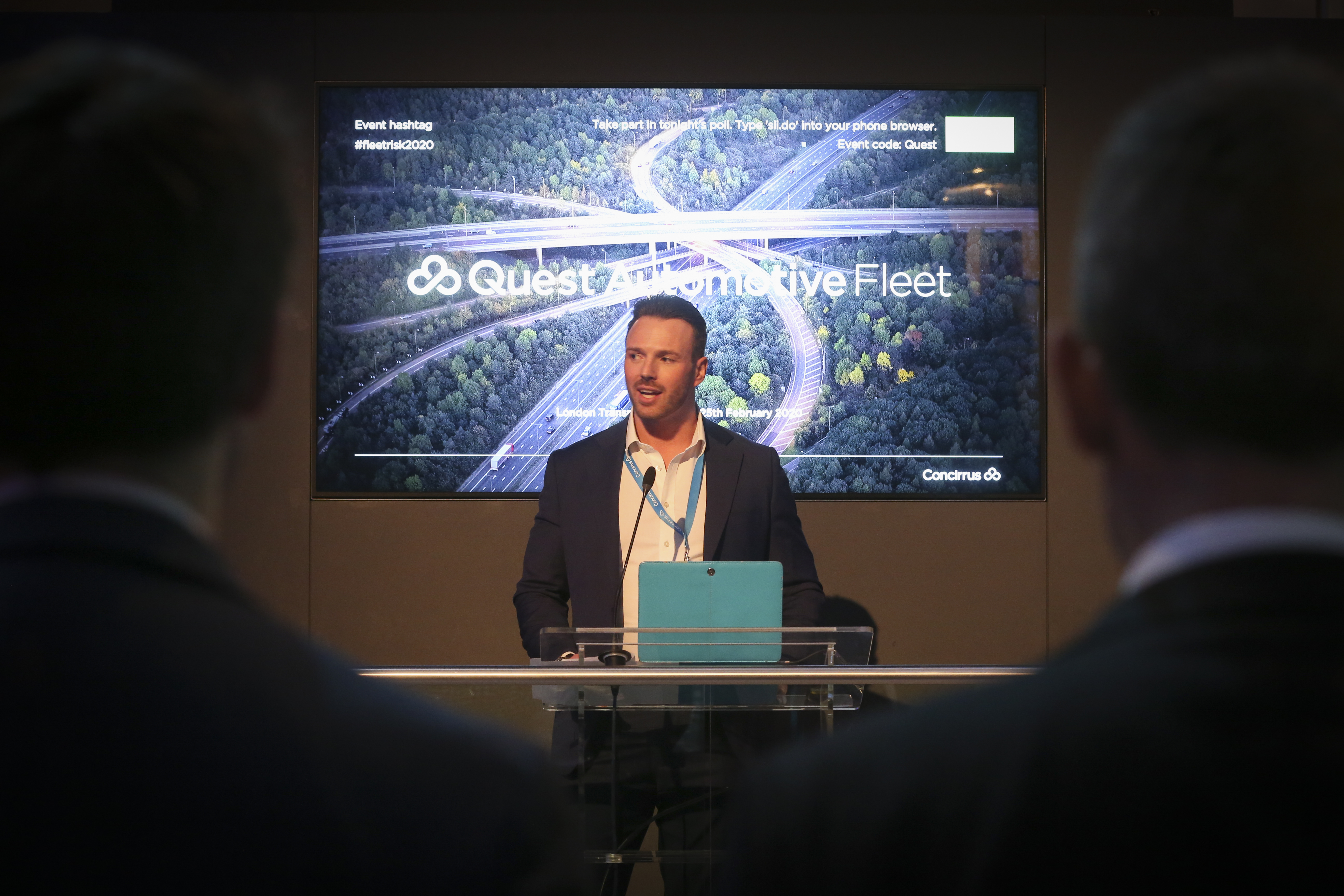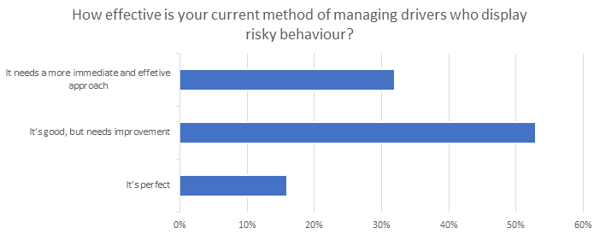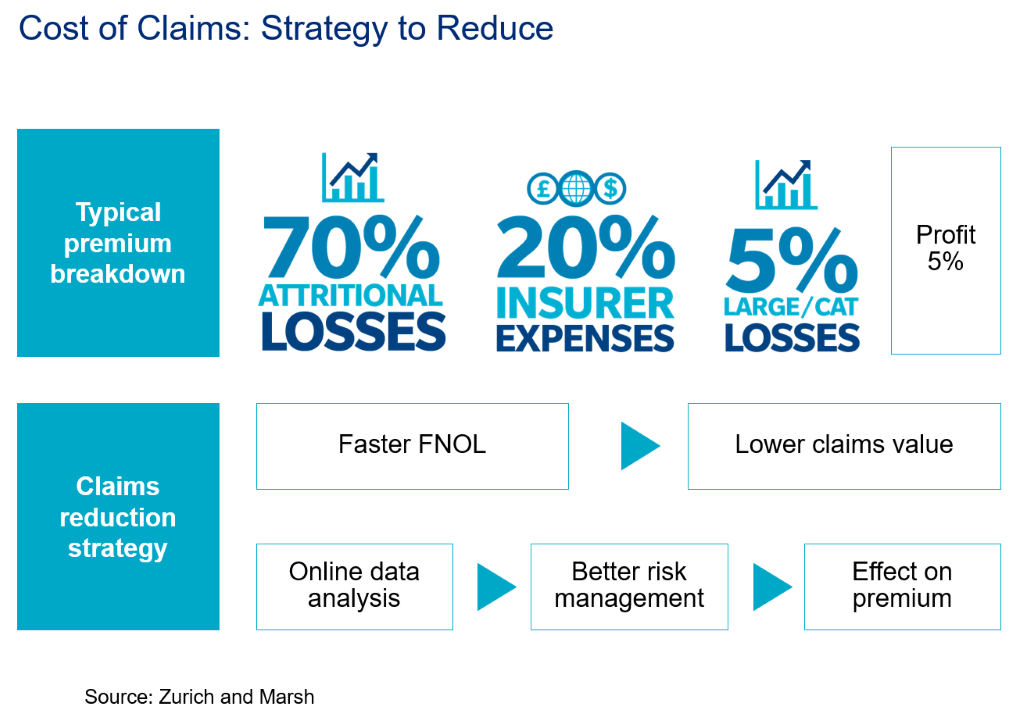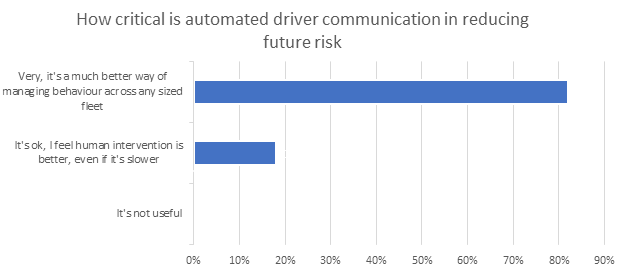Last month we hosted the launch of Quest Automotive Fleet at the iconic London Transport Museum. Read on to find out more about the night where representatives from all areas of automotive insurance and fleet management gathered to learn about our new approach to risk management.
Seven weeks into my new role at Concirrus saw the launch of the latest innovation in commercial automotive insurance, Quest Automotive Fleet. Showcased at the London Transport Museum, over a hundred representatives from all areas of automotive insurance and fleet management were in attendance, including exhibitors from Concirrus’ automotive partners.
The platform aggregates and interprets vast datasets, along with telematics data, in real-time. Doing so delivers insight into unique driver behaviours, specifically those that correlate to risk. This means insurers can more accurately attribute risk to individual driver profiles, as well as respective fleet operators. When such factors are understood, measures can be taken to mitigate their effect, improving the risk profile of a fleet, lowering cost and improving terms. When there is an incident, it’s important to know as soon as possible so that the time and cost of resolution can be controlled. Detection and automation are key to getting on top of claims, and TRL and Marsh both shared their perspectives on the night.
 Chris Gill, Senior Account Executive
Chris Gill, Senior Account Executive
The event reflected on the future direction of the automotive insurance industry. The value of data is well recognised, and improved interpretation allows insurers and operators to align workflows and integrate data-led decision making throughout their teams.
Upon arrival, attendees were polled around such issues. 65% stated that they weren’t utilising telematics data to its full potential. 85% stated that response times and overall claims handling would improve when applying automation to collision management. Over half stated that their current method of managing risky drivers could be improved. Whilst 65% stated they saw Machine Learning Algorithms adding value by reducing the number of false positive alerts relating to FNOL but needed to see results.

Figure 1
One of the largest opportunities we have to add value to our clients is to join up fragmented processes. In the automotive space, there are three key processes that lead to expense that can benefit from an improved approach to real-time data:
1. First Notification of Loss (FNOL)
2. Active Risk Management
3. Automation and the integration of existing infrastructure
Collision Detection and False Positives
Historically, first notification of loss (FNOL) has seen a high volume of false positive alerts. False positive alerts identify themselves as incidents yet turn out to be insignificant events which trigger g-force thresholds within a telematics device. Such examples include potholes and sudden braking. This can lead to high costs for operators, with claims handlers that should be resolving claims having to identify false ones. Further costs arise from the time delay in responding to true collisions. Operators are not always notified of a collision upon the event taking place. Without the use of telemetry or immediate recall, evidence can be lost or inaccurate.
A 48-hour delay in reporting a collision can cost an insurer an additional £3,000. When applied at scale, the overall impact to the profitability of a business can be significant. 100% of the audience polled agreed that faster FNOL and claims processing would reduce cost per claim and increase profitability.
Automation offers the fastest method of receiving FNOL alerts. Reports generated upon breaching certain thresholds within telematics devices allow operators to receive information as soon as an incident takes place. This removes the variable of the Insured having to get in touch with a claim handler, whilst ensuring that the necessary information is collected.
With 91% of those polled stating that more accurate collision alerts were highly sought after, the value of automation was further anticipated in day-to-day operations. 85% stated that the use of automation in collision management will speed up response times and overall claims handling. 40% stated it would help them act to keep their fleet safe, followed by 30% stating it would help to avoid human error. Upon seeing Quest Automotive Fleet, all those polled believed its automated FNOL alerts offered a scalable approach to collision management.

Figure 2
Whilst automation solves delays in knowing when a collision occurs, it does not address the need for more accurate FNOL results. To address the issue of accuracy, the partnership between Concirrus and TRL was showcased. The goal between both companies is to utilise machine learning methods to continually improve the accuracy of FNOL alerts and reduce false positive results in real-time.
Ahead of the presentations, 30% were already completely confident in the use of such algorithms in reducing false positive alerts. A further 65% agreed they showed promise but wanted to see results. Upon seeing the TRL presentation, over 75% responded with confidence in the use of machine learning and an always improving approach to FNOL, with over half being ‘very confident.’ The remaining 24% wanted to see more.
With the functionality and filtration process in place, how will this impact the operational workflows for organisations in the sector? Mike Russell, Managing Director, Head of Non-Specialty Claims UK & Ireland, Client Advisory Services at Marsh gave an excellent overview of what the future business model could look like. With typical premiums currently only delivering a 5% profit margin, the proposed model followed a strategy of lowering claims costs through a more proactive approach to risk management and faster FNOL. The need for such an approach comes after rapid changes in the market taking place without a response in claims reporting.

Slide from Marsh’s presentation showcasing the claims reduction strategy
80% agreed that the model Marsh discussed would allow them to become more proactive in their approach to claims management. 60% stated that the approach Marsh discussed needed to be implemented, regardless of how ready the market is for it.

Iwan Parry, Market Lead – New Mobility, TRL
 Mike Russell, Managing Director, Head of Non- Specialty Claims UK & Ireland, Client Advisory Services, Marsh
Mike Russell, Managing Director, Head of Non- Specialty Claims UK & Ireland, Client Advisory Services, Marsh
Improving Risk Management in Real-Time
When questioned on the effectiveness of current driver management methods, 53% of those polled stated their approach to managing risky drivers was good but needs improvement. 32% stated they needed a more immediate approach.
In order to improve driver management, you need a better understanding of activity. With that in mind, I outlined Quest Automotive Fleet’s ability to capture and act on risk in real-time. The platform provides the ability to monitor insured assets in real-time. Automatic alerts can be triggered upon the realisation of risky behaviour, providing a scalable approach to proactive driver management. Responding automatically to such activity in real-time is far more relevant, improving the impact of each message. It also allows fleet managers to create a profile of activity for a driver, tailor coaching and ensure they remain safe. Both capabilities can be applied to any infrastructure as the software is hardware agnostic. This means investment in existing telematics is not overlooked, lowering barriers to entry.
Upon seeing Quest Automotive Fleet, 82% stated that a real-time view of risk was vital. The entire audience believed that an understanding of behavioural factors would provide a far more accurate view of risk. Automated communications based on such data is also believed to provide a more effective form of management compared to current methods, with 82% again stating it’s critical in reducing future risk. Overall, all those polled stated that digital platforms like Quest Automotive Fleet offered a better way of working, whilst agreeing that Quest Automotive Fleet itself would make day-to-day operations safer.
 Figure 3
Figure 3
By utilising technologies in a way that improves workflows whilst encompassing current infrastructure, we create an ecosystem that’s easily implemented and sustainable in the future. This can transform the way the fleet insurance industry operates, powering new products whilst utilising a holistic view of risk to better reward customers. This improves the retention of good risk, benefiting portfolio health.
If you want to learn more about how we approach innovation within the automotive space, get in touch or visit our product page for more.

Powering the future of insurance
If you want to book a 1-1 meeting with us then let us know by clicking the link below.
Book a meeting